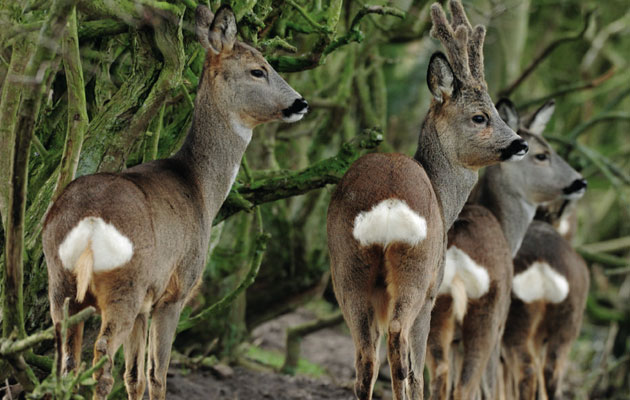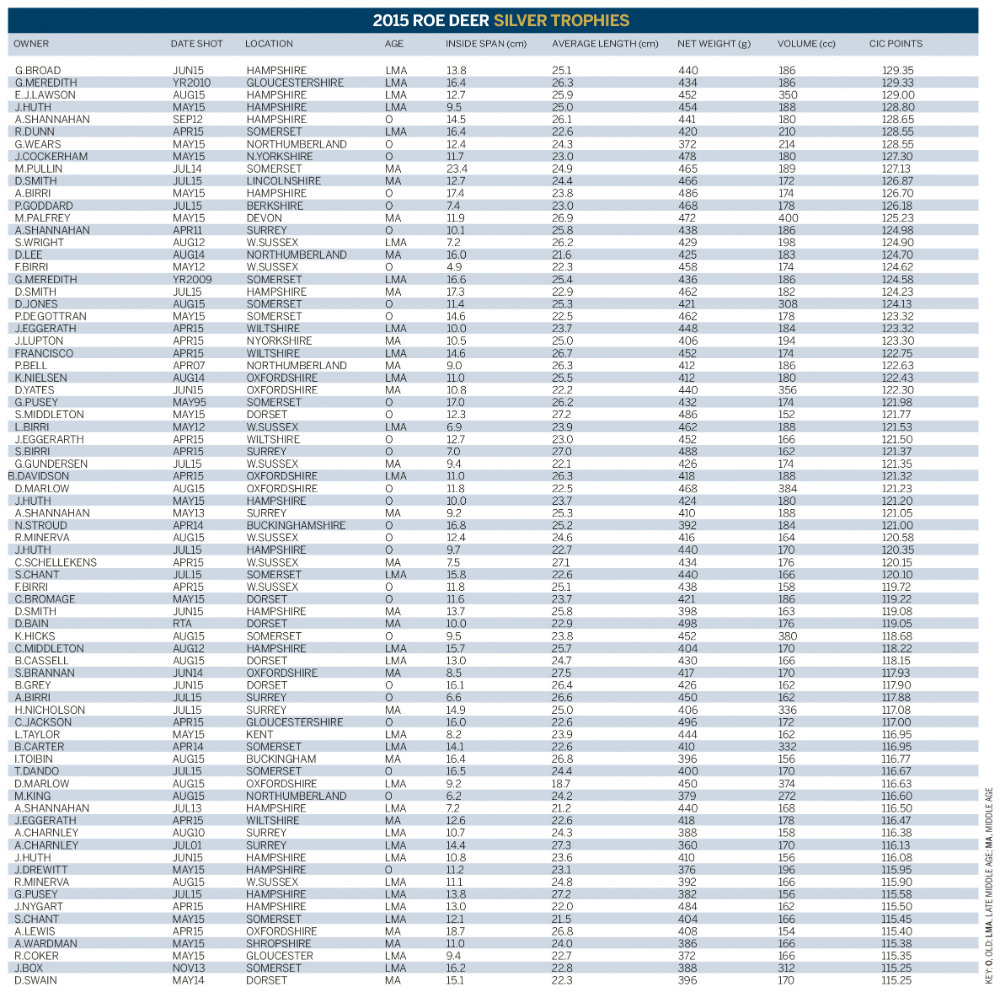English and Welsh roe review 2015
More heads were measured than last year and 215 achieved medals writes Tony Dalby Welsh

There's no quick fix; you need to put in the hours observing the deer
Even more counties appeared in this year’s list, with 25 producing heads that were awarded medals, though some — such as Shropshire, Warwickshire and Herefordshire — produced only one medal head each. There was, however, a welcome return this year by Kent with four medal heads. Last year’s order was thrown in the air this time with Hampshire producing 31 heads, Somerset 30, Dorset 17, West Sussex 16, Wiltshire 15 and Surrey 14. There was an interesting upturn in heads from some of the more traditional roe stalking counties than we have seen for some years.
More than 150 points
Quality within the Gold medal heads was not quite as good as 2014. Five heads achieved more than 150 CIC points, and the largest number of Golds came from Somerset with eight and then Wiltshire and Hampshire with seven apiece, followed by West Sussex, Surrey and Dorset with five each. Did last year’s weather play a part in this lack of quality and if so, what will we see in 2016? The current continual high winds and rain as the deer struggle to get through the winter could presumably have an effect on antler growth. Also noted again this year is the lower number of multi-point heads making medals.
 What we have seen is an increasing number of well-formed six-pointers, with excellent symmetry. Typical of those are Mr C Sealy’s Dorset head at l46.25 points, and Derek Scott’s Gold medal head at 137.03 points and Dan Hembrow’s head at 141.20 points, both from Somerset.
What we have seen is an increasing number of well-formed six-pointers, with excellent symmetry. Typical of those are Mr C Sealy’s Dorset head at l46.25 points, and Derek Scott’s Gold medal head at 137.03 points and Dan Hembrow’s head at 141.20 points, both from Somerset.
For those who use the net weight of trophies as a guide, this year’s Golds averaged 509g, Silver 430g and Bronze 398g. The heaviest head was David Smith’s Hampshire specimen at 580g and the lightest was Mr H. Nicholson’s 328g Bronze medal head, but in this case with a commensurately high volume measurement.
Best of this year was David Smith’s head at 166.05 points, followed by Shaun Skelhorn’s Somerset head at at 164.02 and two from Cumbria, at 164.02 and two from Cumbria, one a somewhat old head from W. Rowley at 155.78 points and Mr A Fraser’s 152.93 point head. Another two Cumbrian heads made Gold, presented by Mr J. Elliott (149.45) and Mr T. Rowley (148.58). Also of note was Steven Walton’s good-quality head from Co. Durham, scoring 140.13 points for Gold.
Surrey has not featured in these lists in any meaningful way for a while, so
it was good to see five Golds and seven Silvers from a total of 15 medal heads, providing a high ratio of quality medals within the overall number presented.
Further down the list is a claim on behalf of female stalkers for the first Silver-medal roe shot in Kent by a woman, Lisa Taylor, scoring 116.95.
Two Lincolnshire heads feature, shot by Messrs B. and D. Smith, a Silver and a Bronze medal.
New measuring forms
Last year, I started this review by discussing the introduction of the new guidelines for the European species within the Red Book, the “bible” of international trophy measuring. The UK team is now well acquainted with the changes and our customers will be equally at home with the new international measuring forms.
Equally important has been the roll-out of the International Trophy Evaluation Database (ITED). This not only allows certified CIC measurers to enter data directly into the database, but also facilitates direct printing of completed measuring forms and enables direct comparisons within individual species’ ranges. There are still a couple of wrinkles, but the team in Budapest is working to fix those relatively small issues. Key for the UK team will be the ability to link this system in while at game fairs around the country.
We have again received questions about what constitutes a “measurable” roe deer head. Debate always seems to revolve around the question of “thickened” skulls. The CIC clearly states in its Handbook for the Evaluation and Measurement of Hunting Trophies (available from any CIC measurer) that roe trophies can have different appearances, depending on the area of origin and the environment. This is considered desirable within the context of the maximum possible genetic diversity.
Therefore, within the assumption that the basic form of roe antlers is a six-point head with a main beam, brow tine and rear tine, if the head can have the CIC formula applied to it in entirety — including for roe an accurate estimation of volume — the head can be measured and awarded the relevant medal. So if we can measure the head within the rules, it can be measured.
In 2016, members of the team will be in attendance at a number of game fairs around the country; details will be put on the Trophy Evaluation website and on the CIC Trophy Measuring Facebook page.











